B0041VYHGW EBOK (86 page)
Authors: David Bordwell,Kristin Thompson

Sometimes the camera is such an active agent that Renoir used repeated camera movements to create patterns of narrative significance. One such pattern is the movement to link characters with details of their environment. Often a sequence begins with a close-up of some detail, and the camera moves back to anchor this detail in its larger spatial and narrative context
(
5.163
,
5.164
).

5.163 Renoir begins the scene of Boeldieu and Maréchal discussing escape plans by framing a close-up of a caged squirrel …

5.164 … before tracking back to reveal the men beside the cage, creating a clear narrative parallel.
More complicated is the scene of the Christmas celebration at Elsa’s that begins with a close-up of the crèche and tracks back to show, in several stages, the interplay of reactions among the characters. Such camera movements are not simply decoration; beginning on a scenic detail before moving to the larger context makes narrative points economically, constantly emphasizing relationships among elements of Renoir’s mise-en-scene. So does the rarer track-in to a detail at the
end
of a scene, as when after Boeldieu’s death, Rauffenstein cuts the geranium, the one flower in the prison
(
5.165
,
5.166
).

5.165 As Rauffenstein moves to the geranium in the window …
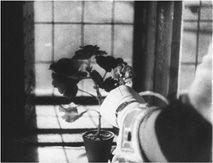
5.166 … Renoir tracks in to a close shot of the flower as he cuts it.
Characters are tied to their environment by some even more ambitious moving-camera shots. These stress important narrative parallels. For example, tracking shots compare actions in two officers’ bars—one French
(
5.167
–
5.169
),
one German
(
5.170
–
5.172
).
Through his camera movements, Renoir indicates a similarity between the two warring sides, blurring their national differences and stressing common desires.
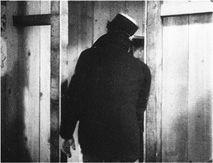
5.167 In the first scene, as Maréchal leaves the French officers’ bar …
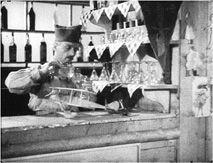
5.168 … Renoir pans and tracks left from the door to reveal pinups (just coming into the frame at the right) …
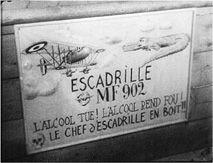
5.169 … and a poster.
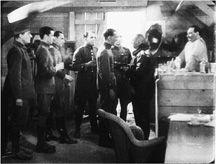
5.170 One scene later, in the German officers’ bar, a similar camera movement, this time toward the right, leaves the characters …
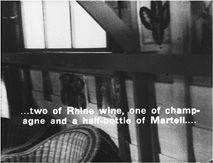
5.171 … and explores on its own …
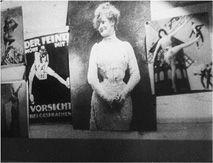
5.172 … discovering some similar decorations.
Or consider how two parallel tracking shots compare the war of the aristocrats and the war of the lower-class people. We are introduced to Rauffenstein’s new position as commander of a POW camp through a lengthy tracking shot
(
5.173
–
5.180
).
During this movement, Renoir presents, wordlessly, the military mystique of grace on the battlefield that characterizes the aristocrat’s war.

5.173 Renoir begins on a crucifix and …
